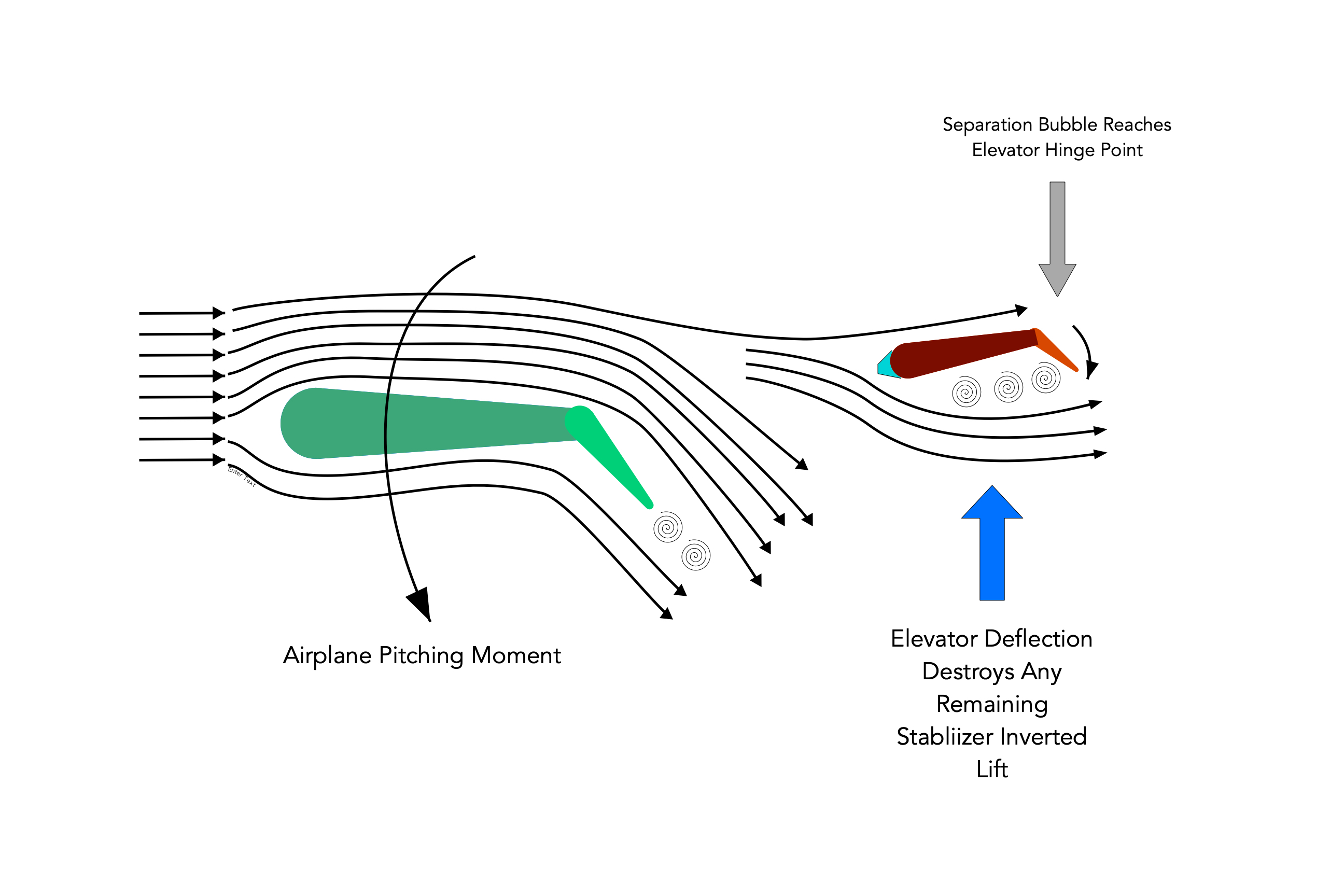Icing Aerodynamics - Tailplane Stall
Ice Contaminated Tailplane Stall
Not all aircraft are susceptible to ICTS. If the elevator is powered, the control system will resist deflection due to aerodynamic forces and will possess the control power necessary to overcome any such forces. Aircraft certificated more recently with unpowered controls will have been designed to avoid ICTS in all configurations.
It is essential that the pilot be familiar with what the AFM or POH has to say about ICTS, and follow the manufacturer’s recommendations for limited flap settings if such limits are published. In almost all cases, ICTS can be avoided by using a reduced flap setting for the approach and landing.
It is essential that the pilot be familiar with what the AFM or POH has to say about ICTS, and follow the manufacturer’s recommendations for limited flap settings if such limits are published. In almost all cases, ICTS can be avoided by using a reduced flap setting for the approach and landing.
ICING AERODYNAMICS - TAILPLANE STALL
Tailplane Behavior with Ice Accretion - Flaps Up
In a typical configuration, the center of lift is aft or the center of gravity, creating a nose down pitching moment. The horizontal stabilizer is trimmed to an incidence suitable to create lift inverted from that of the main wing, balancing the pitching moment. With flaps retracted, the ice contamination doesn't influence this significantly.
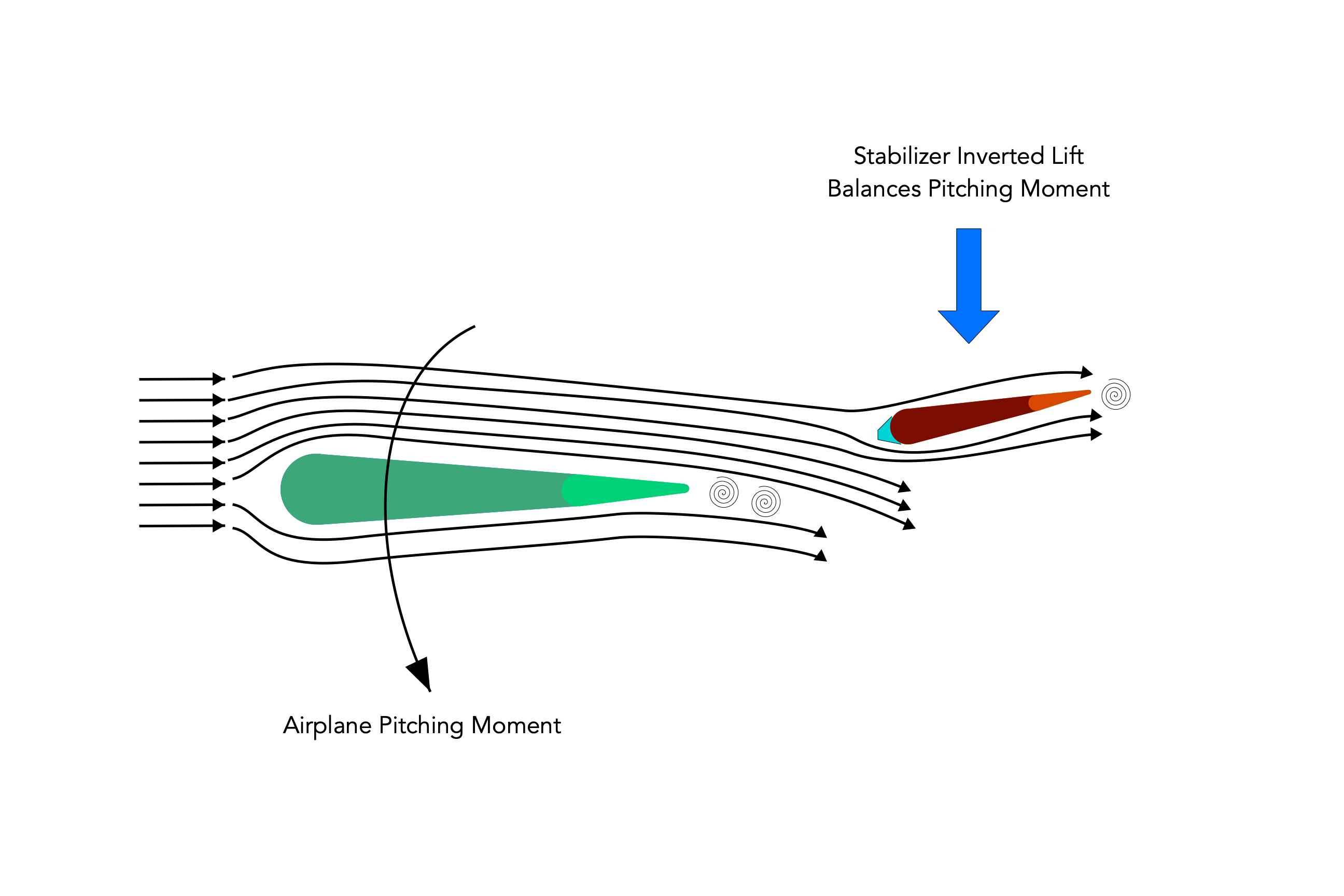
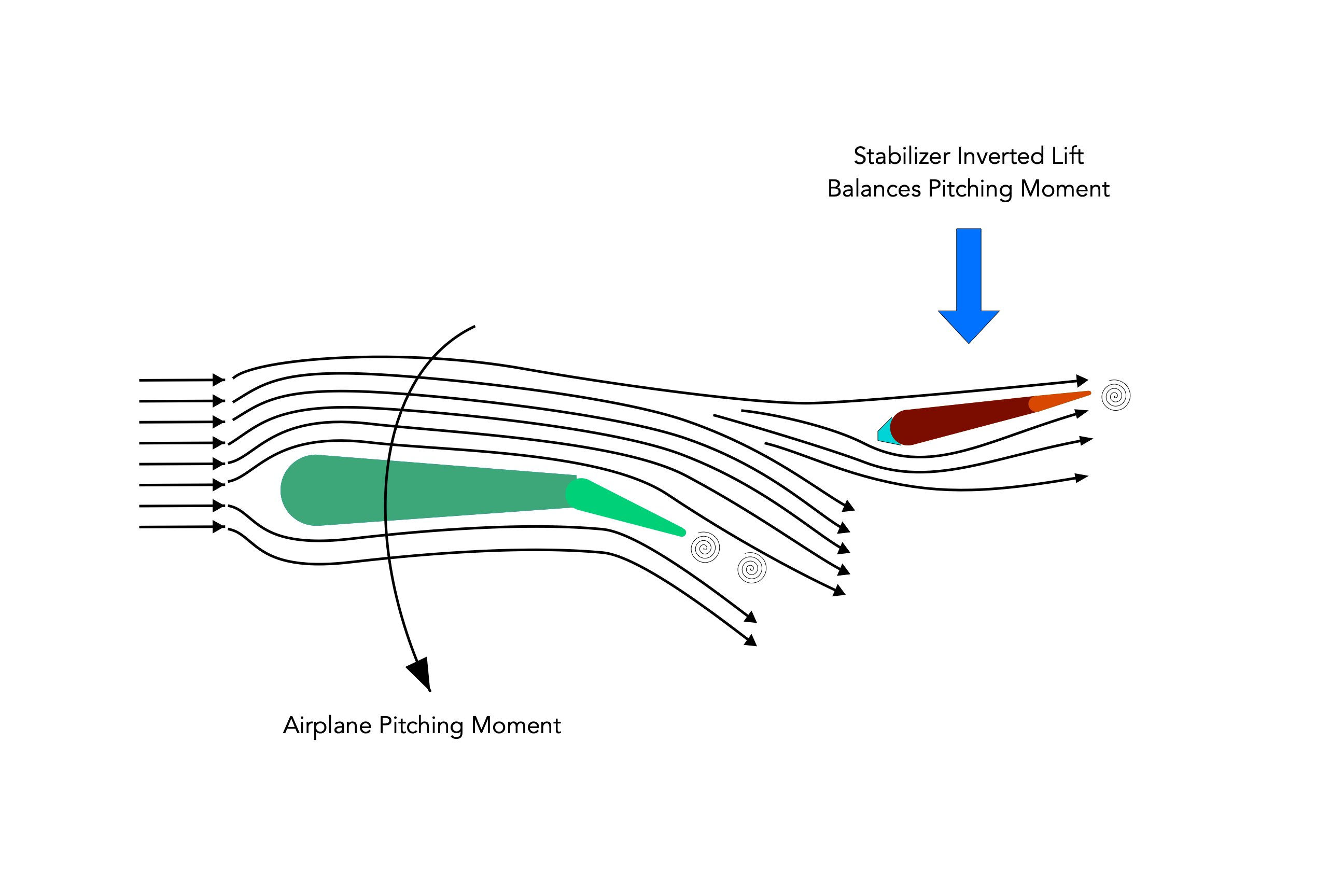
ICING AERODYNAMICS - TAILPLANE STALL
Tailplane Behavior with Ice Accretion - Partial Flaps
As the wing flaps are extended, the downwash angle off the trailing edge of the main wing steepens. This affects the flow around the horizontal stabilizer, increasing the angle of attack at the stabilizer leading edge. hence the need to re-trim the stabilizer with flap extension. The effects of ice accretion on the stabilizer are generally not significant with partial flaps.
ICING AERODYNAMICS - TAILPLANE STALL
Tailplane Behavior with Ice Accretion - Full Flaps, Stick Force Lightening
With full flap extension, the downwash steepens further, leading to further increase of the angle of attack at the stabilizer. At this point, the presence of ice contamination can trigger a flow separation away from the lower stabilizer surface, beginning to stall the stabilizer. The degree of flow separation, and resulting tail stall, is highly sensitive to the tailplane angle of attack. The resulting inconsistency in tailplane lift production leads to very sensitive and unpredictable pitch control. If the flow separation bubble reaches the elevator hinge point, the pilot may notice a buzzing or vibration in the control yoke. The pitch control forces will vary widely, and may become quite light even with larger deflections of the elevator.
If your aircraft is equipped with a stick shaker, it is essential that you are familiar with the stick shaker operation and that you do not mistakenly identify stick shaker operation as elevator buffet.
REDUCE THE TAILPLANE ANGLE OF ATTACK - REDUCE THE FLAP SETTING!
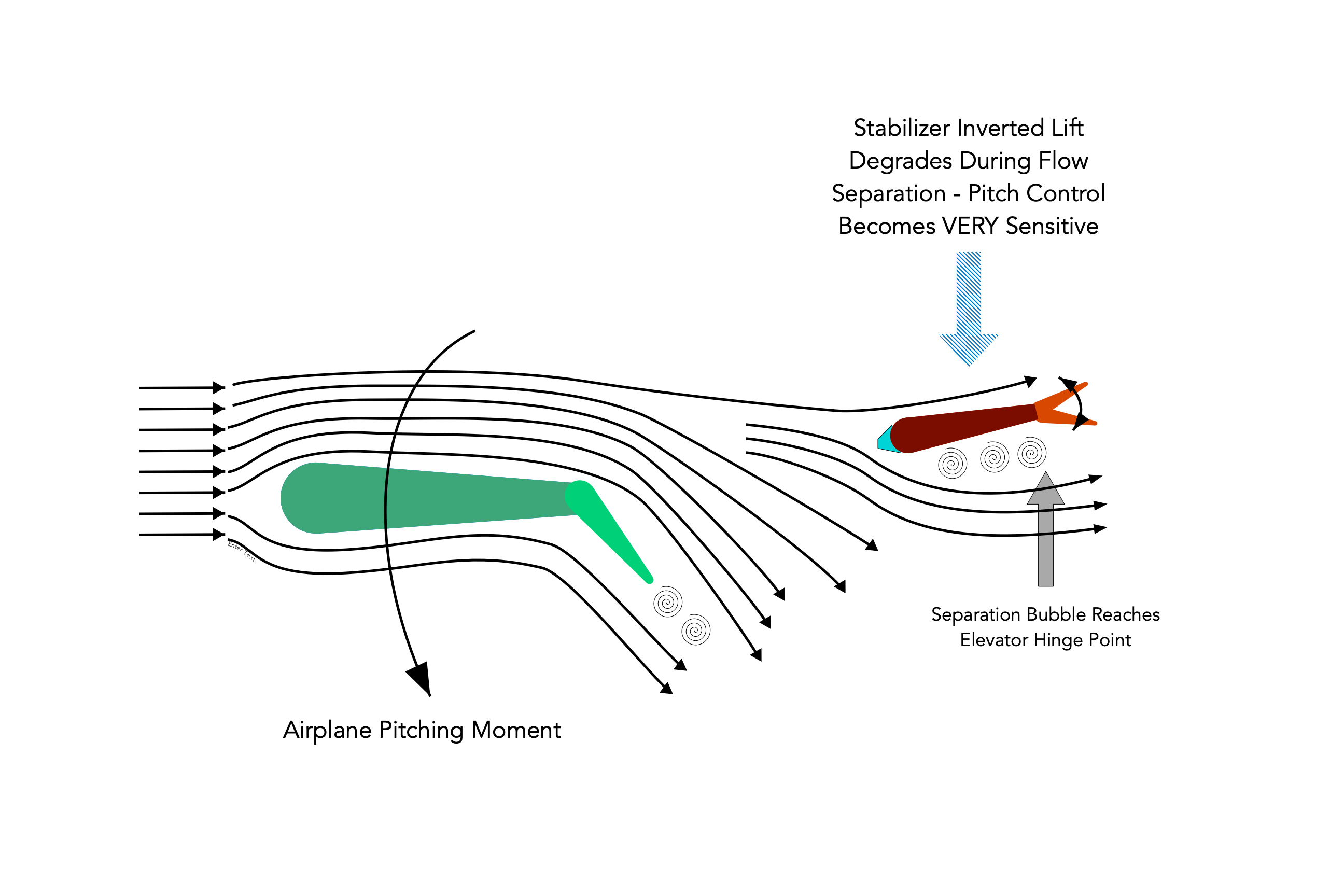
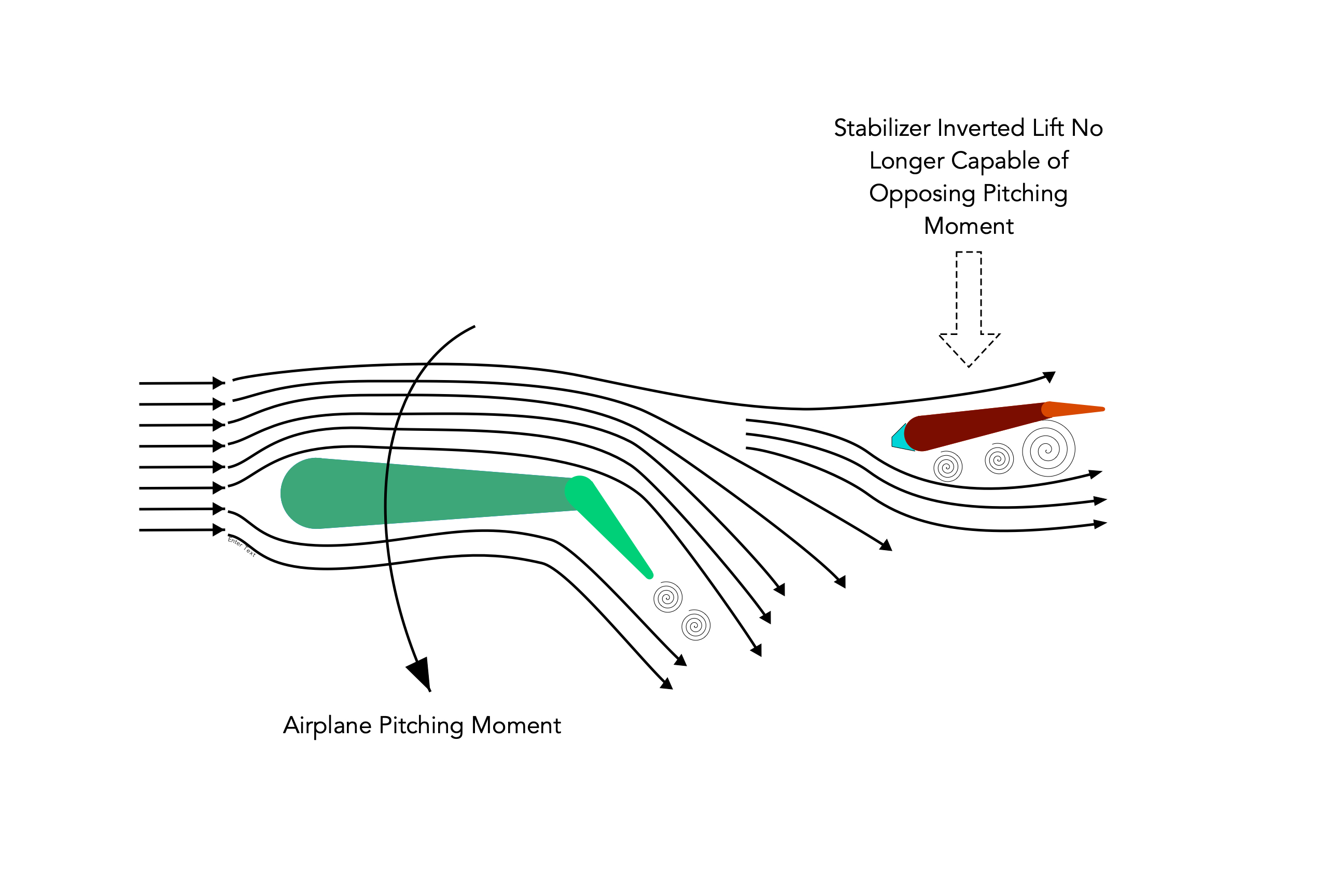
ICING AERODYNAMICS - TAILPLANE STALL
Tailplane Behavior with Ice Accretion - Full Flaps, Tail Stalled
With even a slight nose down elevator deflection, the tail stall can become more developed. The loss of inverted lift at the stabilizer allows the pitching moment to dominate, and the airplane nose pitches downward, often quite suddenly and very steeply.
REDUCE THE TAILPLANE ANGLE OF ATTACK - REDUCE THE FLAP SETTING!
ICING AERODYNAMICS - TAILPLANE STALL
Tailplane Behavior with Ice Accretion - Full Flaps, Elevator Snatch
If the flow separation bubble propagates further aft, beyond the elevator hinge point, and envelops a majority of the elevator, the suction beneath the elevator can result in the elevator self-deflecting downward. This almost completely destroys any remaining inverted lift produced by the stabilizer, and the airplane nose pitches down quite violently. The elevator control forces can be extremely high.
If your aircraft is equipped with a stick pusher, it is essential that you are familiar with the stick pusher operation and that you do not mistakenly identify stick pusher operation as elevator snatch.
REDUCE THE TAILPLANE ANGLE OF ATTACK - REDUCE THE FLAP SETTING!
